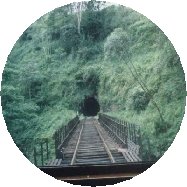
The building of railways in colonised Ceylon starting from the mid-1860s has much in it to
commend. The most stupendous of all is the construction of the Up Country line. They
pierced yards of hard rock to build tunnels, surveyed through treacherous terrain trodden
by a few men before and laid the track bypassing steep gorges which had once delayed the
capture by the British of the last king of Ceylon for 19 long years. True, the railways
then served the colonial purpose of carrying the plantation products to be dispatched by
sea, to the maritime areas, but they have now become a part and parcel of the day-to-day
life of the 'common' man. But, it is very unfotunate that, the enthusiasm shown in some
quarters to import locomotive engines with most-updated technology (though there may
not be any need for such sophisticated technology in Sri Lankan environment)
incurring a loss of millions of rupees more, doesn't manifest in upgrading the lines on
which they would run. It took us more than sixty years to complete the construction of an
additional line just a handful of miles long, running North of the capital, though the
urban population has doubled, even tripled, every 20-30 years. But, in fairness to everybody concerned, there has been some emphasis in this regard very recently which might augur well for railway commuters in particular and country's well-being in general.
Ballast laying started on the Kelani Valley (late 2003)- Photo location Nugegoda
Wadduwa - Kalutara North double track opened (early 2003)- Photo location Wadduwa
Ragama - Ja-Ela doubled - Photo location Ja-Ela
New bridge for the second line over Kalu Ganga (early 2004)
Third line to connect Dematagoda and Kelaniya across the Kelani Ganga (early 2004)
Owner